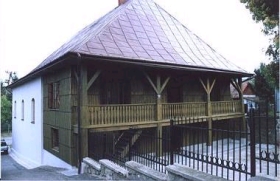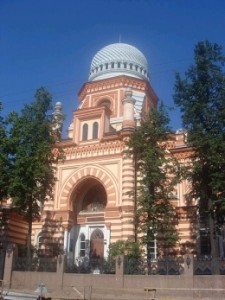The Hebrew word for synagogue is not beit ha-tefilah, ‘house of prayer’, as might be expected. Rather, it is beit ha-knesset, ‘house of assembly’, proof that wherever Jews live, the synagogue lies at the very centre of communal life.
The synagogue grew in importance after the Temple in Jerusalem was destroyed in 70 C.E. While it remained the focus of Jewish worship, dispersed communities needed a focus for expressing their faith, especially in the growing diasporas of Egypt, Babylonia and Rome. Synagogues were probably built from the 6th century B.C.E. onwards (the time of the initial Jewish exile to Babylonia).
Jesus preached in synagogues; Philo and Josephus wrote about them. Remains of Greco-Jewish synagogues are found in Capernaum (Kfar Nahum), near the Sea of Galilee dated at 2nd century C.E.; Dura Europos, Syria, (2nd century C.E.); Sardis in Turkey; Elche in Spain; Ostia in Italy; and Beit Alpha, northern Israel (6th century C.E.). The latter has a mosaic floor showing Noah’s flood, zodiac signs, and the sacrifice of Isaac (the akedah).
The elements that constitute a synagogue are the aron ha-kodesh (‘holy ark’ or niche in the eastern wall, containing the Torah scrolls); the amud (prayer desk, facing the ark) and the bima (the reading desk), from where the Torah is read. Sephardi synagogues have a bima a teba (box), and read the entire service from there. Borrowing from the Islamic al-minbar (platform), the Sephardi bima is also called the almemar.
Later synagogues adopted the ner tamid (eternal light), which represents the Torah’s holiness, and also recalls the light that burned in the Temple. This is a candle or other light that burns in the synagogue, whether or not the synagogue is in use.
Synagogue architecture often mimics that of the host community. For instance, Spanish synagogues of the Muslim period had horseshoe arches and beautiful stucco arabesques. Oriental synagogues tended to seat worshippers on rugs or cushions (like some mosques), whereas Ashkenazi synagogues had pews and standing desks instead (like most churches). Modern Western synagogues tend to place the bima in front of the ark, not in the building’s centre, partly for aesthetic reasons, partly to direct attention to the sermon, as in Protestant churches, and partly for space-saving reasons (this configuration allows for more seats for worshippers).
After 1200 some European synagogues deliberately imitated secular buildings, not churches. Courtyards decreased due to state restrictions. East European Jews built fortress-synagogues. Where affordable, the mechitsa (curtain dividing men from women) developed into a separate ‘women’s gallery’. Reform synagogues (found from the early 19th century onwards) eschewed this practice for doctrinal reasons.
18th century Polish synagogues resembled distinctive wooden pagodas. Later, European emancipation introduced new styles: Baroque, Romanesque, pseudo-Byzantine and Greek Temple. Wealthier communities built cathedral synagogues, blending a neo-Gothic template with Moorish embellishments (witness The New West End, St Petersburg Place, London; and the Oranienstrasse Synagogue, Berlin).
Modern architects like Moshe Safdie and Frank Lloyd Wright revolutionised synagogue design. At the same time, many orthodox communities prefer to return to the simplicity and utility of the shtiebl, or humble prayer room.
A beautiful building says much about communal aspirations. Ultimately, though, a synagogue’s spirituality depends on the nature of its rabbi and congregation.
LINKS:
Wikipedia: Synagogue Architecture
Jewish Encyclopedia: Synagogue Architecture
My Jewish Learning: Synagogue Architecture and Interior Design
New York Times: What Design for a Synagogue Spells Jewish?
The Great Synagogue (Sydney, Australia): Architectural History (deals with specifically with the architectural history of The Great Synagogue)





